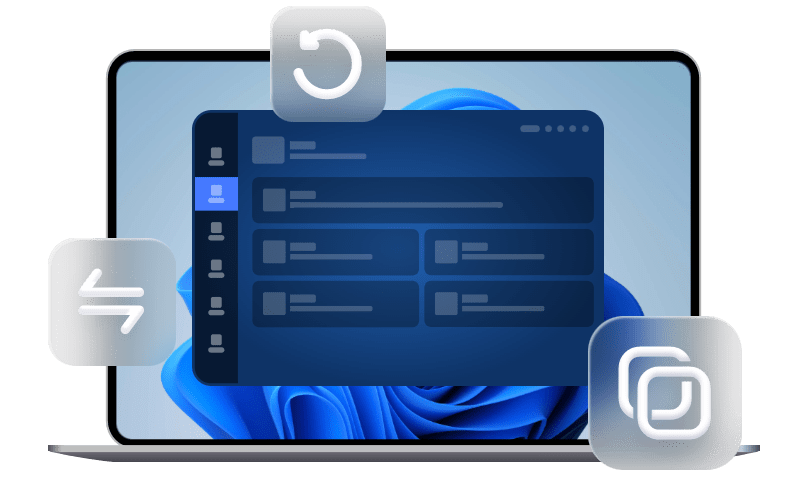How to Make Dell/HP/Lenovo Recovery Partition Bootable?
You may want to make the HP/Dell/Lenovo recovery partition bootable in different situations. Here you’ll learn how to do it and you can create a recovery boot drive for Windows 10/7 in another way.
Recovery partition not bootable
“Long story short, the recovery partition on my HP Pavilion does not boot any more after I installed another version of Windows. There is a partition with 15GB in size in Disk Management yet does not show up in my Explorer. What should I do to make recovery partition bootable so that it can be used any time I need?”
That is a help post on making HP recovery partition bootable in Windows. As a matter of fact, there are many manufactures provides OEM recovery partition for its users. Therefore, we may also find the question on how to make Dell, ASUS or Lenovo recovery partition bootable on forums.
Recovery partition could become unbootable due to different reasons under different circumstances. Windows updating is one of the most common factors that lead to the problem. However, what counts next is to find out how to let recovery partition bootable.
How to make recovery partition bootable in Windows 10/7?
Tips: here are some specific recovery partition keys for different brands of laptops you may want to know:
-
Dell – F8 (F2 for BIOS); F12 for Windows 10;
-
HP – F9 (or F10);
-
Lenovo – F12;
-
ASUS – F9 or ESC;
-
Acer – F12;
In general, there are three common ways to get recovery partition bootable in Windows. Let’s get to know them one by one.
Assign drive letter to recovery partition
1. Open Disk Management. Right click the recovery partition and select Change Drive Letter and Paths.
2. Click Change or Add to assign a desired drive letter.
If you cannot assign drive to the partition with Disk Management, try Diskpart.
1. Type command prompt in the search box, and right click Command Prompt and then select Run as administrator to open an elevated command prompt. Type diskpart and press Enter.
2. Input following commands successively and hit Enter after each.
-
list volume
-
select volume # (the volume number of the recovery partition)
-
assign letter=# (the desired drive letter)
-
exit
If still not work, you may need to change partition type ID to 0x07 (NTFS) on MBR disk. If that does not help, try following methods.
Make recovery partition Active
1. Open an elevated command prompt as instructed. Type diskpart and press Enter.
2. Input following commands successively and hit Enter after each.
-
list disk
-
select disk 0 (the disk where recovery partition locates)
-
list partition
-
select partition # (the partition number of the recovery partition)
-
set id=07 override
-
active
-
exit
3. Type exit again to leave the command prompt. Restart your PC.
Make recovery partition enabled
If you are able to find the install.wim file, try these commands to enable the recovery drive. Suppose the file is in E:/sources folder.
1. Open an elevated command prompt as instructed. Type diskpart and press Enter.
2. Input following commands successively and hit Enter after each.
-
reagentc /setosimage /path E:\sources /index 1 /target C:\Windows
-
reagentc /enable
-
recoverydrive
-
exit
3. Restart your computer then.
Three prevalent ways on how to make recovery partition bootable in Windows 7, 10 or other versions are all displayed. It is recommended to backup recovery partition before your any operations in Windows in the future. At the meantime, if you don’t have an OEM recovery partition for factory reset and longing to protect your current system state, you can try this way to create a bootable recovery drive for your current computer.
Better way to create recovery boot drive in Windows 10/8/7
AOMEI OneKey Recovery Professional is mighty and reliable utility that allows you to create a bootable recovery partition in Windows on HP, Dell, Lenovo, Toshiba, Samsung computers/Servers etc., regardless of the brand.
It provides an easy way to help you create the bootable system recovery partition on current internal disk or external drive. The recovery partition would contain the current system state. The restore is fairly simple, restart or turn on the PC, keep tapping F11 or A key to access the partition, confirm the operating and then start to restore.
For different demands, AOMEI also provides OneKey Recovery Family License (register up to 4 PCs or Servers) and Technician License (register unlimited PCs or Servers). For enterprise users, it offers Customization edition to customize exclusive brand and logo on the software. Here comes the main interface of the Professional edition.
-
Create recovery drive (you can also set up a schedule to backup the latest version of OS regularly)
-
Restore from the bootable recovery partition
Summary
You may encounter recovery drive not bootable due to different reasons. Here you can find ways on how to make recovery partition bootable in Windows 7/10 on different PCs such as HP, Dell, Lenovo, and so on.
Except the bootable recovery drive making software, AOMEI also brings its family products to us. The AOMEI Backupper Standard, regarded as one of the fastest backup software by CNET, is totally free for all Windows PC users. You may want to get one to protect your PC now. Also, it is also free SSD migration software in cloning entire disk to another.
